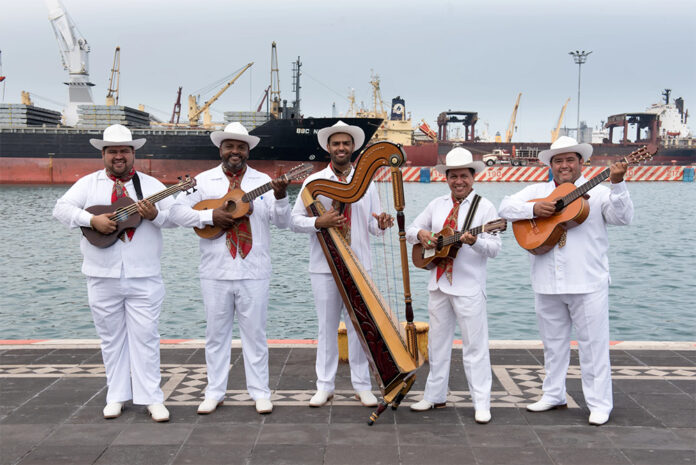The origin of the word jarocho is found in the skilled mulatto horsemen who herded cattle in Veracruz. Let’s learn more about it!
Although today we generally use the name jarocho to call the people of Veracruz and more specifically, those of its coast, its origin dates back to the third root of Mexico: the African. And it is that at first, the term designated the mulatto and Afro-descendant population of this state. With this, a rich cultural and social history of centuries was synthesized in a single word. This became the foundation of a rich Veracruz tradition.
The jarocha and the jarochos: the origin of the word
The term jarocho dates back to the exuberant livestock that was practiced in the region of the Veracruz coast, from its introduction in the 16th century. The horsemen in charge of herding cattle in Sotavento (one of the coastal areas of Veracruz), used a lance, which was called jara or jarocha, a word of Arabic origin. This style of mounted ranching was originally from the region of Andalusia, in Spain.
The aforementioned cattle pike was the tool that differentiated these horsemen from the chinacos of the Altiplano of Mexico. Another fundamental characteristic is that these men on horseback were mulattoes, that is, of African descent. They usually came from communities where people from Africa (most of them fugitive slaves) had married indigenous people from the region.
The birth of the jarocho stereotype
In the viceregal era, these horsemen were dedicated above all to herding cattle. They drove them with their lances from the coast of Veracruz to Córdoba, Orizaba and Mexico City. It was precisely in the capital of the country, at the beginning of the 19th century, when they began to be called jarochos, thanks to their showy work tool.
During the War of Independence and after it, the jarochos played a role similar to that of the chinacos, but in Veracruz lands. There, in addition to cattle work, they dedicated themselves to forming militias that participated in the various conflicts that the young nation suffered.
Also in this century, they were described in various chronicles by both other Mexicans and European travelers. Their skill on horseback was visible; they carried, in addition to the jara, a machete attached to their belt. They rode barefoot and wore wide-sleeved shirts. Their heads were covered with wide-brimmed, low-crowned hats. The jarochas, on the other hand, wore low-cut blouses, light shoes that left their toes uncovered, and a shawl. Their hair was held back by a comb.
It was often said that the Jarochos despised agricultural work, considering it monotonous and boring. On the other hand, herding cattle assured them excitement and various adventures in their daily lives. They were skilled in words, had a bold character and loved parties and fandangos.
The great Jarocho region
Although the Jarocho originated in the coastal area of Sotavento, in Veracruz, in the 19th century it became a cultural region of the country. And the Afro-descendant population that was called Jarocha was not only located in this Mexican state. It extended from Veracruz lands to the states of Oaxaca and Tabasco, in the basins of the Papaloapan and Coatzacoalcos rivers.
An example of this is the son jarocho, the musical expression par excellence of the region, which also took shape in the 19th century. It is still performed today in the port of Veracruz, as well as in San Juan Guichicovi, Tuxtepec, Ixcatlán and Ojitlán in Oaxaca, and in Huimanguillo, Tabasco. Numerous mestizo, Nahua, Popoluca, Mixe, Mazatec, Zapotec and Chinantec populations in these three Mexican entities remain immersed in the jarocho culture.
After the cultural renaissance of Veracruz in the 1950s and the jaranero movement of the 1970s and 1980s, jarocho became the colloquial name for the people of Veracruz, particularly those from the port and Sotavento, regardless of their ethnic origin. However, we must not forget its origin in the mulatto and Afro-descendant communities of the extensive transoceanic region of Mexico.



